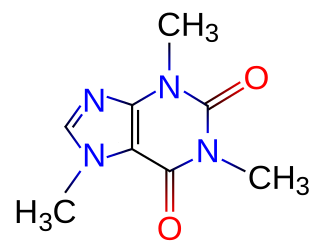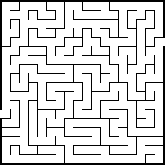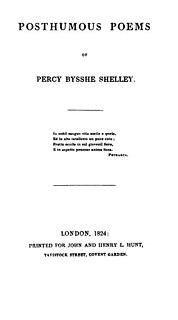 W
WMemory is the faculty of the brain by which data or information is encoded, stored, and retrieved when needed. It is the retention of information over time for the purpose of influencing future action. If past events could not be remembered, it would be impossible for language, relationships, or personal identity to develop. Memory loss is usually described as forgetfulness or amnesia.
 W
W5-hydroxytryptamine (serotonin) 1E receptor (5-HT1E) is a highly expressed human G-protein coupled receptor that belongs to the 5-HT1 receptor family. The human gene is denoted as HTR1E.
 W
WAdaptive memory is the study of memory systems that have evolved to help retain survival- and fitness-related information, i.e., that are geared toward helping an organism enhance its reproductive fitness and chances of surviving. One key element of adaptive memory research is the notion that memory evolved to help survival by better retaining information that is fitness-relevant. One of the foundations of this method of studying memory is the relatively little adaptive value of a memory system that evolved merely to remember past events. Memory systems, it is argued, must use the past in some service of the present or the planning of the future. Another assumption under this model is that the evolved memory mechanisms are likely to be domain-specific, or sensitive to certain types of information.
 W
WAssociative interference is a cognitive theory established on the concept of associative learning, which suggests that the brain links related elements. When one element is stimulated, its associates can also be activated. The most known study demonstrating the credibility of this concept was Pavlov's experiment in 1927 which was later developed into the learning procedure known as classical conditioning.
 W
WChildhood memory refers to memories formed during childhood. Among its other roles, memory functions to guide present behaviour and to predict future outcomes. Memory in childhood is qualitatively and quantitatively different from the memories formed and retrieved in late adolescence and the adult years. Childhood memory research is relatively recent in relation to the study of other types of cognitive processes underpinning behaviour. Understanding the mechanisms by which memories in childhood are encoded and later retrieved has important implications in many areas. Research into childhood memory includes topics such as childhood memory formation and retrieval mechanisms in relation to those in adults, controversies surrounding infantile amnesia and the fact that adults have relatively poor memories of early childhood, the ways in which school environment and family environment influence memory, and the ways in which memory can be improved in childhood to improve overall cognition, performance in school, and well-being, both in childhood and in adulthood.
 W
WConditioned place preference (CPP) is a form of Pavlovian conditioning used to measure the motivational effects of objects or experiences. By measuring the amount of time an animal spends in an area that has been associated with a stimulus, researchers can infer the animal's liking for the stimulus. This paradigm can also be used to measure conditioned place aversion with an identical procedure involving aversive stimuli instead. Both procedures usually involve mice or rats as subjects. This procedure can be used to measure extinction and reinstatement of the conditioned stimulus. Certain drugs are used in this paradigm to measure their reinforcing properties. Two different methods are used to choose the compartments to be conditioned, and these are biased vs. unbiased. The biased method allows the animal to explore the apparatus, and the compartment they least prefer is the one that the drug is administered in and the one they most prefer is the one where the vehicle is injected. This method allows the animal to choose the compartment they get the drug and vehicle in. In comparison, the unbiased method does not allow the animal to choose what compartment they get the drug and vehicle in and instead the researcher chooses the compartments.
 W
WCaffeine is a bitter, white crystalline xanthine alkaloid that acts as a psychoactive stimulant drug. It can have both positive and negative effects on different aspects of memory.
 W
WEthanol is the type of alcohol found in alcoholic beverages. It is a volatile, flammable, colorless liquid that acts as a central nervous system depressant. Ethanol can impair different types of memory.
 W
WThe effects of stress on memory include interference with a person's capacity to encode memory and the ability to retrieve information. During times of stress, the body reacts by secreting stress hormones into the bloodstream. Stress can cause acute and chronic changes in certain brain areas which can cause long-term damage. Over-secretion of stress hormones most frequently impairs long-term delayed recall memory, but can enhance short-term, immediate recall memory. This enhancement is particularly relative in emotional memory. In particular, the hippocampus, prefrontal cortex and the amygdala are affected. One class of stress hormone responsible for negatively affecting long-term, delayed recall memory is the glucocorticoids (GCs), the most notable of which is cortisol. Glucocorticoids facilitate and impair the actions of stress in the brain memory process. Cortisol is a known biomarker for stress. Under normal circumstances, the hippocampus regulates the production of cortisol through negative feedback because it has many receptors that are sensitive to these stress hormones. However, an excess of cortisol can impair the ability of the hippocampus to both encode and recall memories. These stress hormones are also hindering the hippocampus from receiving enough energy by diverting glucose levels to surrounding muscles.
 W
WAn eyewitness testimony is a statement given under oath by a person present at an event who can describe what happened. During circumstances in which a child is a witness to the event, the child can be used to deliver a testimony on the stand. The credibility of a child, however, is often questioned due to their underdeveloped memory capacity and overall brain physiology. Researchers found that eyewitness memory requires high-order memory capacity even for well-developed adult brain. Because a child's brain is not yet fully developed, each child witness must be assessed by the proper authorities to determine their reliability as a witness and whether or not they are mature enough to accurately recall the event, provide important details and withstand leading questions.
 W
WHafiz, literally meaning "guardian" or "memorizer", depending on the context, is a term used by Muslims for someone who has completely memorized the Quran. Hafiza is the female equivalent.
 W
WInvoluntary memory, also known as involuntary explicit memory, involuntary conscious memory, involuntary aware memory, madeleine moment, mind pops and most commonly, involuntary autobiographical memory, is a sub-component of memory that occurs when cues encountered in everyday life evoke recollections of the past without conscious effort. Voluntary memory, its binary opposite, is characterized by a deliberate effort to recall the past.
 W
WLatent learning is the subconscious retention of information without reinforcement or motivation. In latent learning, one changes behavior only when there is sufficient motivation later than when they subconsciously retained the information.
 W
WThe limbic system, also known as the paleomammalian cortex, is a set of brain structures located on both sides of the thalamus, immediately beneath the medial temporal lobe of the cerebrum primarily in the forebrain.
 W
WIn neuroscience, long-term potentiation (LTP) is a persistent strengthening of synapses based on recent patterns of activity. These are patterns of synaptic activity that produce a long-lasting increase in signal transmission between two neurons. The opposite of LTP is long-term depression, which produces a long-lasting decrease in synaptic strength.
 W
WMemorization is the process of committing something to memory. Mental process undertaken in order to store in memory for later recall items such as experiences, names, appointments, addresses, telephone numbers, lists, stories, poems, pictures, maps, diagrams, facts, music or other visual, auditory, or tactical information.
 W
WHuman memory is the process in which information and material is encoded, stored and retrieved in the brain. Memory is a property of the central nervous system, with three different classifications: short-term, long-term and sensory memory. The three types of memory have specific, different functions but each are equally important for memory processes. Sensory information is transformed and encoded in a certain way in the brain, which forms a memory representation. This unique coding of information creates a memory.
 W
WAge-related memory loss, sometimes described as "normal aging", is qualitatively different from memory loss associated with types of dementia such as Alzheimer's disease, and is believed to have a different brain mechanism.
 W
WThe mind is the set of faculties including cognitive aspects such as consciousness, imagination, perception, thinking, intelligence, judgement, language and memory, as well as noncognitive aspects such as emotion and instinct. Under the scientific physicalist interpretation, the mind is produced at least in part by the brain. The primary competitors to the physicalist interpretations of the mind are idealism, substance dualism, and types of property dualism, and by some lights eliminative materialism and anomalous monism. There is a lengthy tradition in philosophy, religion, psychology, and cognitive science about what constitutes a mind and what are its distinguishing properties.
 W
WMnemosyne is the goddess of memory in Greek mythology. "Mnemosyne" is derived from the same source as the word mnemonic, that being the Greek word mnēmē, which means "remembrance, memory".
 W
WMood dependence is the facilitation of memory when mood at retrieval is identical to the mood at encoding. When one encodes a memory, they not only record sensory data, they also store their mood and emotional states. An individual's present mood thus affects the memories that are most easily available to them, such that when they are in a good mood they recall good memories. The associative nature of memory also means that one tends to store happy memories in a linked set. Unlike mood-congruent memory, mood-dependent memory occurs when one's current mood resembles their mood at the time of memory storage, which helps to recall the memory. Thus, the likelihood of remembering an event is higher when encoding and recall moods match up. However, it seems that only authentic moods have the power to produce these mood-dependent effects.
 W
W"Music, When Soft Voices Die" is a major poem by Percy Bysshe Shelley, written in 1821 and first published in Posthumous Poems of Percy Bysshe Shelley in 1824 in London by John and Henry L. Hunt with a preface by Mary Shelley. The poem is one of the most anthologised, influential, and well-known of Shelley's works.
 W
WThe neurobiological effects of physical exercise are numerous and involve a wide range of interrelated effects on brain structure, brain function, and cognition. A large body of research in humans has demonstrated that consistent aerobic exercise induces persistent improvements in certain cognitive functions, healthy alterations in gene expression in the brain, and beneficial forms of neuroplasticity and behavioral plasticity; some of these long-term effects include: increased neuron growth, increased neurological activity, improved stress coping, enhanced cognitive control of behavior, improved declarative, spatial, and working memory, and structural and functional improvements in brain structures and pathways associated with cognitive control and memory. The effects of exercise on cognition have important implications for improving academic performance in children and college students, improving adult productivity, preserving cognitive function in old age, preventing or treating certain neurological disorders, and improving overall quality of life.
 W
WNutt v. National Institute Inc. was an early case in which it was found that copyright extended beyond the words of a work. The court found that "The infringement need not be a complete or exact copy. Paraphrasing or copying with evasion is an infringement, even though there may be little or no conceivable identity between the two."
 W
WReconstructive memory is a theory of memory recall, in which the act of remembering is influenced by various other cognitive processes including perception, imagination, semantic memory and beliefs, amongst others. People view their memories as being a coherent and truthful account of episodic memory and believe that their perspective is free from an error during recall. However, the reconstructive process of memory recall is subject to distortion by other intervening cognitive functions such as individual perceptions, social influences, and world knowledge, all of which can lead to errors during reconstruction.
 W
WReminiscence therapy is used to counsel and support older people, and is an intervention technique with brain-injured patients and those who appear to have "Alzheimer's and other forms of cognitive disease."
 W
WRote learning is a memorization technique based on repetition. The idea is that one will be able to quickly recall the meaning of the material the more one repeats it. Some of the alternatives to rote learning include meaningful learning, associative learning, and active learning.
 W
WSpaced repetition is an evidence-based learning technique that is usually performed with flashcards. Newly introduced and more difficult flashcards are shown more frequently, while older and less difficult flashcards are shown less frequently in order to exploit the psychological spacing effect. The use of spaced repetition has been proven to increase rate of learning.
 W
WIn cognitive psychology and neuroscience, spatial memory is a form of memory responsible for the recording of information about one's environment and spatial orientation. For example, a person's spatial memory is required in order to navigate around a familiar city, just as a rat's spatial memory is needed to learn the location of food at the end of a maze. It is often argued that in both humans and animals, spatial memories are summarized as a cognitive map.
 W
WThe Tetris effect occurs when people devote so much time and attention to an activity that it begins to pattern their thoughts, mental images, and dreams. It takes its name from the video game Tetris.
 W
WVisual memory describes the relationship between perceptual processing and the encoding, storage and retrieval of the resulting neural representations. Visual memory occurs over a broad time range spanning from eye movements to years in order to visually navigate to a previously visited location. Visual memory is a form of memory which preserves some characteristics of our senses pertaining to visual experience. We are able to place in memory visual information which resembles objects, places, animals or people in a mental image. The experience of visual memory is also referred to as the mind's eye through which we can retrieve from our memory a mental image of original objects, places, animals or people. Visual memory is one of several cognitive systems, which are all interconnected parts that combine to form the human memory. Types of palinopsia, the persistence or recurrence of a visual image after the stimulus has been removed, is a dysfunction of visual memory.